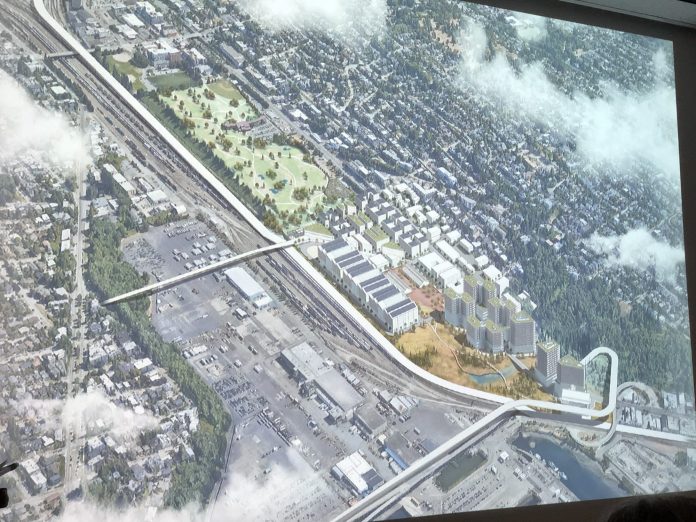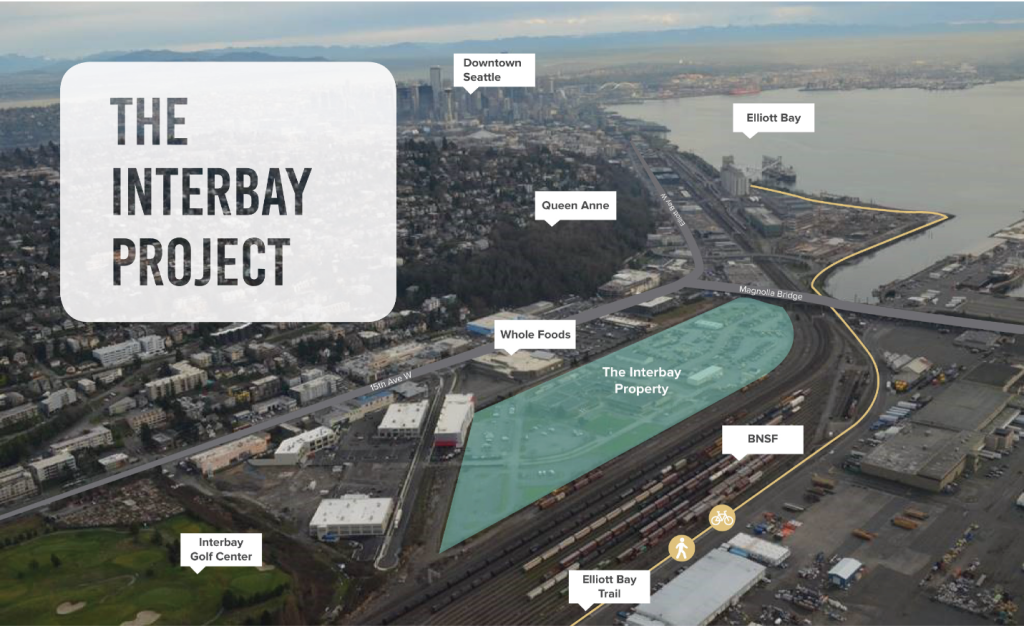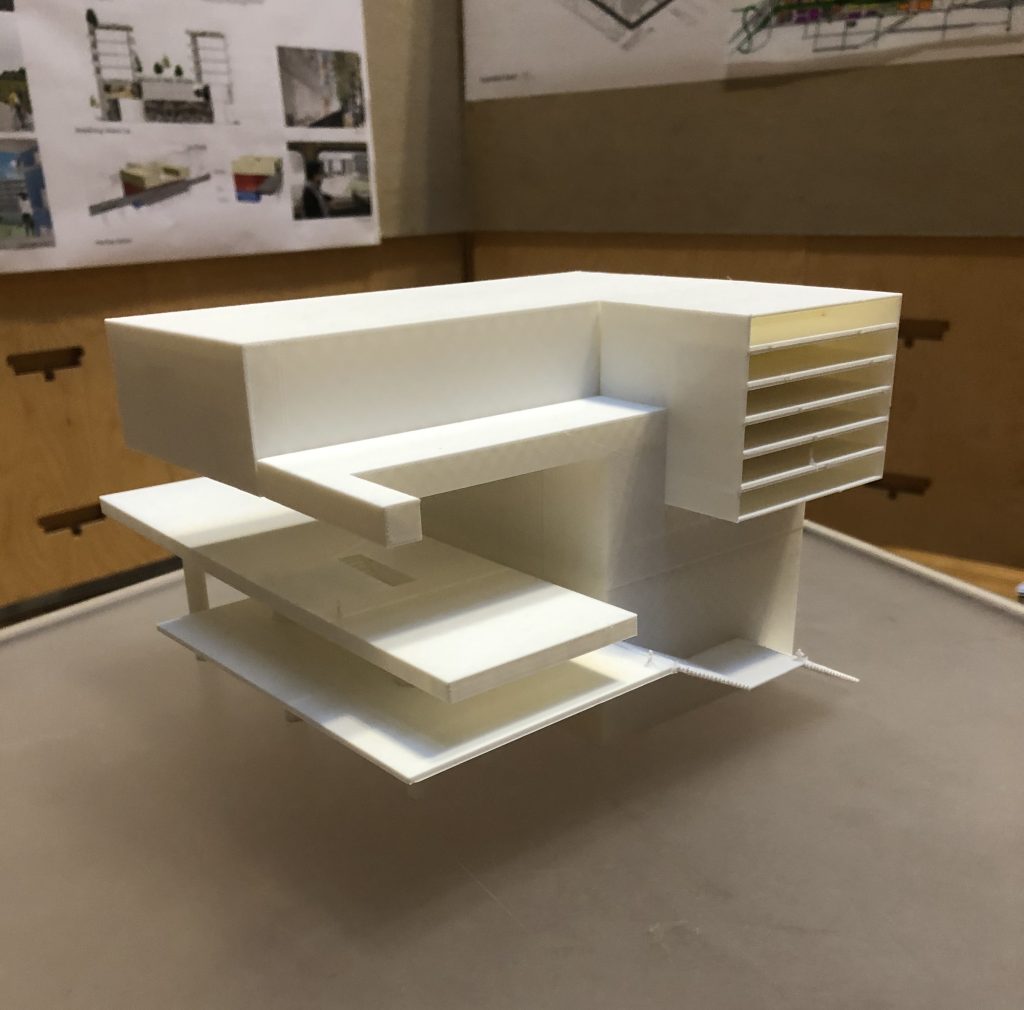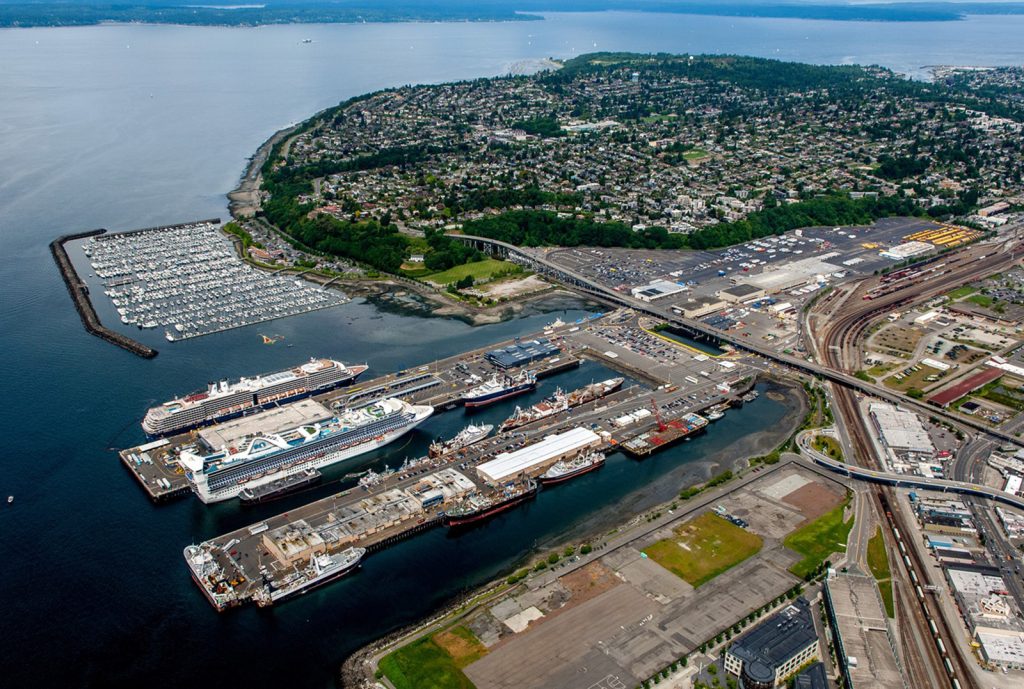
Last week, the Washington Department of Commerce released a report about the future of the Interbay Armory site. After months of deliberation, their blue ribbon advisory panel proposed to move the National Guard to North Bend, convey the newly empty 25 acres of Interbay to a new state entity, and have that entity sell off the land to reimburse the expense.
The report has sparks of good ideas. It sees the potential at this crux of infrastructure, development, and a booming population. It recognizes what could be there. Then it stops short of making bold proposals.
For that, I want to tear into the report. As Anton Ego said in Ratatouille, negative criticism is fun to write and fun to read. And I had some great bon mots to lob, like “vanilla inertia” and “whittled the smallest plan from the largest potential.” But I’m not going to demolish the report for reasons I’ll get to in a moment.
The Report
In 2018, the Washington State Legislature set up the Interbay Armory Advisory Committee and tasked them with figuring out how to pay for moving the National Guard to North Bend. The 25 acres that the Guard currently occupies in Interbay no longer fits their mission. The site could get cut off from traffic or flooded in an earthquake, the facilities are not large enough to fit the current equipment and staff, and the structure itself is reaching the end of its 50-year lifecycle.
The report that the committee produced is very straight forward. They looked at possible uses for the site and tested those uses against several criteria like maximize public benefit, support the National Guard, and leverage innovative partnerships.

None of the possible uses stands out as a clear winner that delivers all the things. Some pay back better than others. Some produce more jobs or homes than others.
So the end result is a proposal to create a new Community Preservation and Development Authority. Formed under state law, CPDAs have the authority to own, manage, and sell property. With some legislative tweaks, the committee saw this as an opportunity to maintain some level of control over the site and steer its development while paying off the National Guard move.
The Problems
The report has issues. First, everyone is still talking past each other. The report references discussions with Sound Transit, and mentions developments involving Magnolia Bridge, Ballard Bridge and high speed rail. But it does not mention seven other infrastructure replacement projects that directly impact the use of this site. That network of rivers, roads, and rail is what makes this industrial site valuable and threatens to choke it. The report also does not mention the separate committee established to look at how these things are being coordinated.
Reporting of the community response is uneven. Over the year of work, the committee reached out for ideas on what to do with the site. They heard from people asking for new public schools, development of dense affordable housing, and building a new animal shelter. Even with hundreds of comments ranging across the spectrum, the report leads their “Feedback Received” section with “concern regarding loss of industrial land”. This concern only appeared in a handful of the responses included in the report’s communications appendix (big pdf file warning), vastly fewer than spoke about housing or the animal shelter. That those few responses concerning industry came from BNSF and the Port of Seattle suggests that thumbs were on the scales and some comments mattered more than others.
And the report is overreliant on current conditions which again are not good. The zoning for the site is exactly the same that created the big box retail throughout Interbay. The site is covered by the Ballard Interbay Northend Manufacturing Industrial Center (BINMIC) plan which is completely out of date. The BINMIC was approved in 1998 with a 20-year vision. However, we hit that 20 years and the plans’ proposals are unfinished and many of them eclipsed by new conditions. Furthermore, the BINMIC does not reference climate change at all and does not include light rail or the fast, intense growth of Ballard. It is a shell of a plan, propped up only by reference in other documents at the regional level.
Visions for Interbay
While the committee did its work, groups of architecture, planning, landscape architecture, and urban design students have been developing their own proposals for Interbay. Working with professors David Blum and Rick Mohler, the students of the College of Built Environments envisioned what Interbay could be. The ideas were presented at a studio on Tuesday.

The students came up with six very strong proposals. I am not going to do them justice because each worked through phasing, balancing uses, and some really good visualizations. Some of the highlights included:
- Mixed use Interbay Light Rail Station
- Restoration of a saltwater marsh along Elliott Bay
- Mass timber manufacturing facility
- A new marketplace coming from the Smith Cove light rail station
- Elevating the topography of the site using industrial buildings as a retaining wall
- A golf course sized urban farm and P-Patch
It would be easy to say that these were just student projects. But there is a difference between unfettered and unrealistic. The proposals were not bound by the constraints that the committee was working under. Parcel lines could disappear. Light rail can be a given. New bridges for just bikes and pedestrians could be built. They also were not bound by decades of dysfunction.

None of these proposals were unrealistic. Each had an extremely clear grasp of the importance of the site, its potential in the city, and its position within our climate future.
With the push from their instructors, all the teams started with the Armory and expanded their vision to the whole neighborhood. Some crossed 15th Avenue W, putting matching sets of residential on either side. Others went north and south, connecting Dravus Street to a repurposed Interbay Golf Course to the new Smith Cove light rail station.
This expansive thinking was recognized by two members of the Armory committee who attended the studio. Representative Gael Tarleton (who recently announced a run for Secretary of State) and former Governor Gary Locke praised students. It spurred a discussion about timing of development in the area. The Guard must be moved first, their construction in North Bend complete and new facility up and running before the state gets the deed to the Armory. No matter what happens, there will be five or six years before the Armory site is ready for development, and that’s the best case scenario.
The Deeper Issue
There was a bonus on Tuesday. After the UW studios were over, The Urbanist had its monthly meet up at the Panama Hotel. The guest speaker this month was new Councilmember Tammy Morales. Outlining her priorities, she talked about working against displacement and building wealth in disadvantaged communities. One of the tools she plans to explore is public development authorities.
And that is where my mind was changed about the Interbay Armory report. Having the Councilmember talking up the same mechanism that is proposed for the Armory shows how broken our land use rules have become. We are not just searching for alternatives to zoning or new types of buildings. We are seeing a need to change the City’s and the State’s relationship with development and land ownership itself. We are looking at ways for the public entities to move away from simply permitting builders and reviewing developers to themselves take stronger authority over specific keystone properties.
It’s a new type of stewardship, not just being a good owner of land, but being a responsible participant in the growth of the city. Seattle took a tiny step in this direction with the arena development, holding back from rubber stamping a street vacation in SODO until a better proposal (using less public funds) came around. We had another small step with the Mercer Megablock, linking sale and development of public land to a more complex arrangement.
Perhaps we are getting past the view that the City can’t be a participant in its own evolution. From parcels acquired to our street right-of-ways to underutilized open spaces like golf courses, we have property. They’re not just lands to be set gently on the shelf. They’re an endowment for the city’s future. We’re starting to figure out ways to make them work.

And proposals like the public development authorities say that our existing governance is not the right one for the job. Twenty years of planning for Interbay to be an employment center that has lost jobs. The hands-off approach has crowded the area with mini storage and exhaust fumes. Something new has to be created, specifically tasked to maximize public benefit, realize a long-term vision over different administrations, and maintain openness to productive community input.
The Armory committee has used their report to put this kind of authority in front of the legislature. And that is a daring vision for development in this state.
So while I disagree with some of the mechanics of the Armory report, it is absolutely a step forward. It gets us closer to having a functional relationship between the city and the land it owns. It gets us closer to recognizing the City can be an investor in its own future. And it gets us closer to a situation where the visions of architecture students can be accomplished.
Ray Dubicki is a stay-at-home dad and parent-on-call for taking care of general school and neighborhood tasks around Ballard. This lets him see how urbanism works (or doesn’t) during the hours most people are locked in their office. He is an attorney and urbanist by training, with soup-to-nuts planning experience from code enforcement to university development to writing zoning ordinances. He enjoys using PowerPoint, but only because it’s no longer a weekly obligation.

